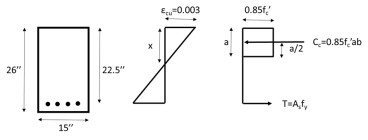Connections and joints
Contents [show]
Connections and joints refer to the critical elements in structural systems that serve as the links holding various structural members together and ensuring the stability of a building or infrastructure. These elements play a crucial role in transmitting loads, accommodating movement, and distributing forces throughout a structure. Properly designed connections and joints are essential for the safety and performance of the entire system. They come in various forms and serve distinct functions. Welded connections, for example, are commonly used in steel structures. Reinforced concrete structures often incorporate various types of joints, such as expansion joints and construction joints, to accommodate thermal expansion and shrinkage. Whether in bridges, buildings, or industrial facilities, connections and joints are critical components that should be carefully designed to ensure the reliability of the entire structure.
Selected Topics
Want to read more like this?

Designing Steel Connections from Your Structural Analysis Program
Apr, 07, 2022 | NewsIf beams and columns are the bones of a structure, then connections are the joints that keep it all...

RAM Connection
Mar, 30, 2022 | Software
Bentley Webinar | Advance Your Steel Connection Design With RAM Connection
Mar, 08, 2023 | EventSteel connection design is a crucial part of ensuring the structural integrity of any steel-based p...

Bentley Webinar: New Zealand Steel Connection design with RAM Connection
Jun, 03, 2024 | EventConnection design forms an integral part of any structural design workflow that deals with steel st...

csJoint
Nov, 01, 2013 | Software
IDEA Connection
Feb, 02, 2016 | SoftwareStructural systems
Sep, 14, 2023 | EducationStructural systems refer to the arrangement of structural elements within a building or structure...

Bentley Coffee Corner: Structural - SEAPAC - An Introduction to Connection Design using RAM Connection
Apr, 24, 2023 | EventFor any steel structure, connections are the most vulnerable part and special care needs to be take...
Structural loads
Sep, 07, 2023 | EducationStructural loads refer to the forces, pressures, and other external actions that act upon a struct...
Trending

Diaphragms
Structural stability

Nominal flexural strength of a reinforced concrete beam

Calculate the Maximum Shear Stress

Truss deflection using the unit load method

Overhanging beam: shear force and bending moment calculation

Calculation Example – Beam with inner hinge (Part A). Find the Reactions

